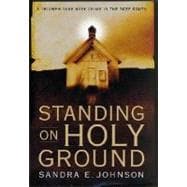
Note: Supplemental materials are not guaranteed with Rental or Used book purchases.
Purchase Benefits
What is included with this book?
| Silent tongue | p. 3 |
| Lifted hands, open hearts | p. 22 |
| Who the hell is Ammie Murray? | p. 27 |
| Whatcha' helping that Nigger church for? | p. 36 |
| From the past | p. 57 |
| Honey bear and Max | p. 76 |
| Under attack | p. 88 |
| Do you have a death wish? | p. 104 |
| Rebirth | p. 116 |
| Halloween | p. 120 |
| Stick and bulldog | p. 129 |
| Lost soul | p. 137 |
| Smoke and ashes | p. 154 |
| Different colors, same message | p. 176 |
| A stranger from Texas | p. 192 |
| The Lord is standing by | p. 213 |
| We're watching you | p. 229 |
| Fire in the night | p. 250 |
| A season for justice | p. 270 |
| A lesson from Galatians | p. 280 |
| Saying good-bye | p. 305 |
| An expression of God | p. 315 |
| Table of Contents provided by Blackwell. All Rights Reserved. |
The New copy of this book will include any supplemental materials advertised. Please check the title of the book to determine if it should include any access cards, study guides, lab manuals, CDs, etc.
The Used, Rental and eBook copies of this book are not guaranteed to include any supplemental materials. Typically, only the book itself is included. This is true even if the title states it includes any access cards, study guides, lab manuals, CDs, etc.